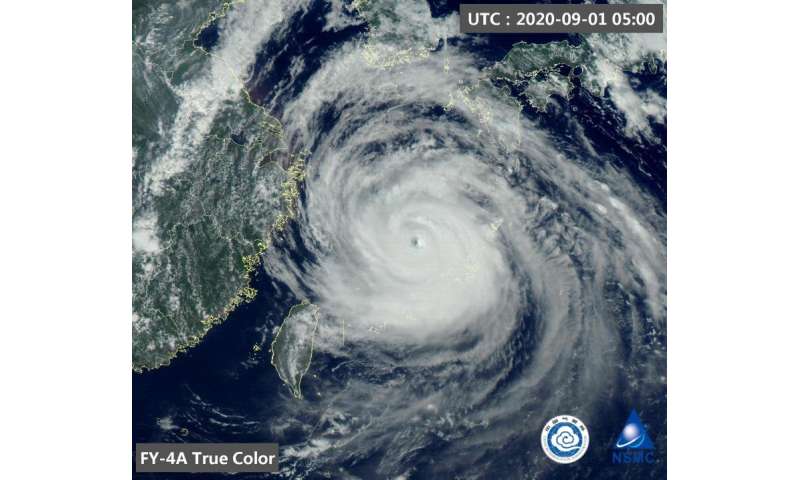Scientists explore the potential for further improvements to tropical cyclone track forecasts
by Science X staff
A recent study suggested that we have probably approached the limit of predictability for tropical cyclone (TC) track prediction. If that's true, there's little we can do to improve TC forecasts as an incorrect position affects the utility of all other guidance, including wind, precipitation, and storm surge guidance. This would be bad news for disaster prevention and mitigation.
"The reason some scientists ask whether the limit of predictability is near or has already been reached is that there's a diminishing trend in the reduction of positional error in National Hurricane Center (NHC) tropical cyclone forecasts. From this, there seems to be little room for improvement," explained Dr. Feifan Zhou, a scientist with the Institute of Atmospheric Physics at the Chinese Academy of Sciences, referring to a question asked by Landsea and Cangialosi (LC18) in a paper published in 2018 .
Not willing to give up potential opportunities for improved TC forecasts, Zhou used the same dataset as in LC18 (except excluding tropical depressions) and an approach called Statistical Analysis and Forecast Error estimation, proposed by Zoltan Toth and his collaborators at the National Oceanic and Atmospheric Administration of USA. In a study co-authored by Zhou and Toth and recently published in the Bulletin of the American Meteorological Society (BAMS), they explore what the past trend is in the reduction of TC forecast track error, and how such errors may be further reduced in future decades.
In accordance with theoretical expectations, they found that the true forecast track error (i.e., forecast minus real TC position) increases exponentially with lead time. The 24-hour forecast error growth rate appears to be rather stable over the years, with only relatively small year-to-year fluctuations, possibly influenced by seasonal circulations such as ENSO or MJO. As Zhou explains, "the exponential growth of true forecast track error implies that the dynamics of TC motions could be viewed as linear, and that there is no model induced error in TC position forecasts. In other words, the transposition of TCs is dominated by the large-scale environmental circulation, which is well simulated in modern numerical weather prediction (NWP) models."
Interestingly, Zhou and Toth also found that the true analysis error also changes exponentially over long periods of time. "The near-exponential reduction of analysis error that we found over the years means that initial errors in the NHC official forecasts are reduced by approximately the same fraction each year. This suggests that the efficiency of international NWP research and development affecting the official forecasts, by and large, is constant over the years", added Zhou.
Based on these features, the team set up an error model using just four parameters. Assuming that the level of investments, and the pace of improvements to the observing, modeling, and data assimilation systems continue unabated, their 4-parameter error model indicates that the time limit of predictability at the 181 nm error level that was reached at day 5 in 2017, may be extended beyond 6/8 days in 10/30 years' time.
"That is to say in 10 years' time, the forecast skill at day 6 would be the same as it was at day 5 in 2017. Considering also some results from Zhang et al. (2019 , we can add that this one day per decade extrapolated error reduction, given the assumption above, may hold for at least 25 years into the future. That's a long time, with lots of potential for TC track error reductions along the way", explained Dr. Toth.
The more optimistic assessment of TC track predictability by Zhou and Toth (2020) is apparently due to their recognition that true forecast error behaves exponentially (i.e., grows over forecast days, and is reduced by NWP development over the years). This is in contrast to LC18, who tentatively assume that perceived errors (i.e., forecast minus analysis position) may be reduced linearly.
More information: Feifan Zhou et al, On the Prospects for Improved Tropical Cyclone Track Forecasts, Bulletin of the American Meteorological Society (2020). DOI: 10.1175/BAMS-D-19-0166.1
Journal information: Bulletin of the American Meteorological Society
Provided by Chinese Academy of Sciences